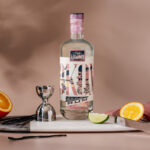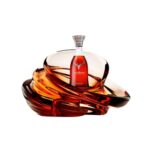Recently, my esteemed colleague Rusty Sly published an article expressing his preference for the use of corks over screwcap closures for wine bottles. In the interest of presenting another viewpoint, I would like to say that my own preference is firmly on the side of twist-offs. Although admittedly my own household is split on this issue, as my wife Karen prefers the romance and tradition of corks.
In no way am I criticizing Rusty’s argument. (There is no way I can even address his presentation of the chemical issues — he’s the scientist, not I!)

But, with regard to the issue of the need for cork closures for long-term aging of a decade or more for fine wines, my understanding is that the vast majority of wines aren’t aged for any great length of time, or even have the structure to be aged. And I know for me personally, aging a wine beyond seven years is the exception rather than the rule. So, why should this small minority drive the industry?
I agree with Rusty that corks are not the only cause of TCA contamination, but I expect they are the major contributor. And corks can have other issues as well, such as breakage and crumbling. And twist-offs are just so darn convenient.
In addition, I think we have a duty [maybe even a sacred one?] to encourage people to drink wine, including bringing new wine drinkers into the fold. I wonder how many newbies have tried a wine, found it tasted “off” and not realized it was “corked”, and then just thought they didn’t like that wine, winery or even wine in general.
All that being said, I am really no expert on this subject except for my own experience. So, I turned to my friend Stillman Brown, owner/winemaker of Stillman Wines and Zeppelin Winery (www.zeppelinwinery.com). This is what he had to say:
“The idea that corks should ‘breathe’ is a canard; it’s not controllable and the maturation of wine in the bottle is anaerobic; this is sound theory, and has been shown in French and Australian experiments with corks and screwcaps.
Corks have physical defects, and can dry out in low humidity storage conditions.
The only problem with screwcaps is the physical vulnerability of the seal, which is a very small area on the top of the bottle; this can be simply remedied by improved bottle and screwcap design.
Agglomerate corks that are made from fine cork particles flushed with supercritical CO2 and then fused with food grade plastic, and neutral food grade plastic corks, are also superior to ‘natural’ i.e. cut single piece corks; the issues of pressure and rebound are easily solved.
If you want more oxygen in a wine, leave it in the barrel longer or micro-ox it, but don’t rely on a little piece of cork to leak the ‘correct’ amount of oxygen over the course of years.
Blaming reductive aromas on the perfect seal of the screwcap is a cover for imperfect winemaking, not to say that sulfur compounds are perfectly predictable.
I have been hearing the cork industry’s claims and promises for almost thirty years now, and their time should have been up before that. But screwcaps are for bums, right?”
So, I guess there is room for debate. What’s your preference?
Michael Perlis has been pursuing his passion for wine for more than 25 years. He has had the good fortune of having numerous mentors to show him the way, as well as a wonderful wife who encourages him and shares his interest. After a couple of decades of learning about wine, attending events, visiting wineries and vineyards, and tasting as much wine as he possibly could, he had the amazing luck to meet Eve Bushman. Now, as Contributing Editor for Eve’s Wine 101, he does his best to bring as much information as possible about wine to Eve’s Wine 101 faithful readers. (2013 Update: Eve and Michael announced Eve Wine 101 Consulting. Info is here: http://evewine101.com/press-releases/)










Very good article from a different perspective. I believe that there are drawbacks with both styles of closures. The thing that I have found is that each have their own issues chemically. TCA with cork and hydrogen sulfide with screw caps. Like most chemical reactions, if you change the conditions or test setup, you will get different results. They may or may not be bad. The changes in old world wines where 2ndary aromatics are developed during aging would probably not occur with screw caps. The 1997 Château Léoville-Las Cases that I opened recently had so much to offer in aromatics and flavor. Another 10-20 years and I will open my last bottle. I agree that wines opened in 7-10 years are great with screw caps. They are fresh with bold flavors. Yes, the metrics may only show a small percentage of people that age wines and you are correct that not all wines can be aged. That is an individual’s choice and good guidance from wine store proprietors to help us select the correct wines for aging. We must also look at the restaurants that offer many fine vintage wines and the effects on their business. I agree with your article in many ways Mike but I am still a cork person. We both select and drink very good wines but we do have different palates. Nothing wrong with that as we do live in America. Nice article. The future of wine closures will definitely be interesting.
Cheers,
Rusty Sly
Thanks Rusty. Your comments are appreciated. Do you have any thoughts on the points that Stillman made?
Michael
Mike,
Driving home today I began to think about this issue from a more scientific approach. I believe that the battle between screw caps and corks will be more of a preference than anything. It will not end from what I can see. The missing part to all of the evidence being put on the table by both parties (screw cap and cork) is the source of a lot of the confusion in that the positions are based on uncontrolled data and results. There are no controls bounding what we are comparing amongst ourselves. For example screw caps can have a foil, PVDC, rubber, etc for a sealing surface. Are they all the same at keeping oxygen out? How do they react when hot or cold? All materials have their own unique coefficient of thermal expansion. It could be small or large. Depending how large could result in oxygen penetration. Even corks have variations in length and construction. So how do we say one is the perfect seal when your test samples and conditions are inconsistent? If I were given this task to resolve as an engineer I would use a specific cap, cork, bottle and wine which would be tested at a controlled temp and humidity over some period of time. Since I like the results age using cork for my old world wines, it would need to be over 10 to 30 years (drastic, but I love my Bordeaux wines). Every 6 months, 3 screw cap, 3 cork and controls would be sampled and tested using various types of chemical analysis. Removing all of the variables that are being used by both parties would provide good metrics from which we could develop good statistical data from. Yes, real numbers from controlled test. Personally, no one will take on a task like this so like wines, I think you will need to chose which closure you like. For me, I will not change my position. One knit before I finish. I really get tired of always hearing about cork always being the source for TCA. Cork IS NOT THE ONLY SOURCE OF TCA. You could ask the Cork Council how low the TCA numbers are in cork. They actually run controlled tests on just the cork. Notice I did not say wine. If you want to know, pull up the article from my archive.
Cheers,
Rusty Sly
Rusty, I know I am not going to change your mind, but it seems your primary concern is for those wines held for very long-term aging, which is a very small percentage of wines. Bearing in mind that winemaker Stillman Brown of Stillman Wines and Zeppelin Winery isn’t advocating going to 100% twist-offs, although he argues against natural cork due to its inherent flaws, I asked him how he chooses which wines to bottle under twist-off versus cork and he said:
“Frankly convenience plays a role – not every bottling line has a screwcap machine. I’m usually more interested in other devices being available that day, and happy with the range of CO2 flushed agglomerate corks.”
And with regard to long-term aging, I’m going to let Stillman have the last word on this:
“Well, maybe we don’t know how long a Diam 10 will last, though Diams have lasted at least ten years so far. Perhaps if I was bottling a $600 wine that might be opened in 30 years I’d use a screwcap and protector. But I wouldn’t use a natural cork.”
Michael